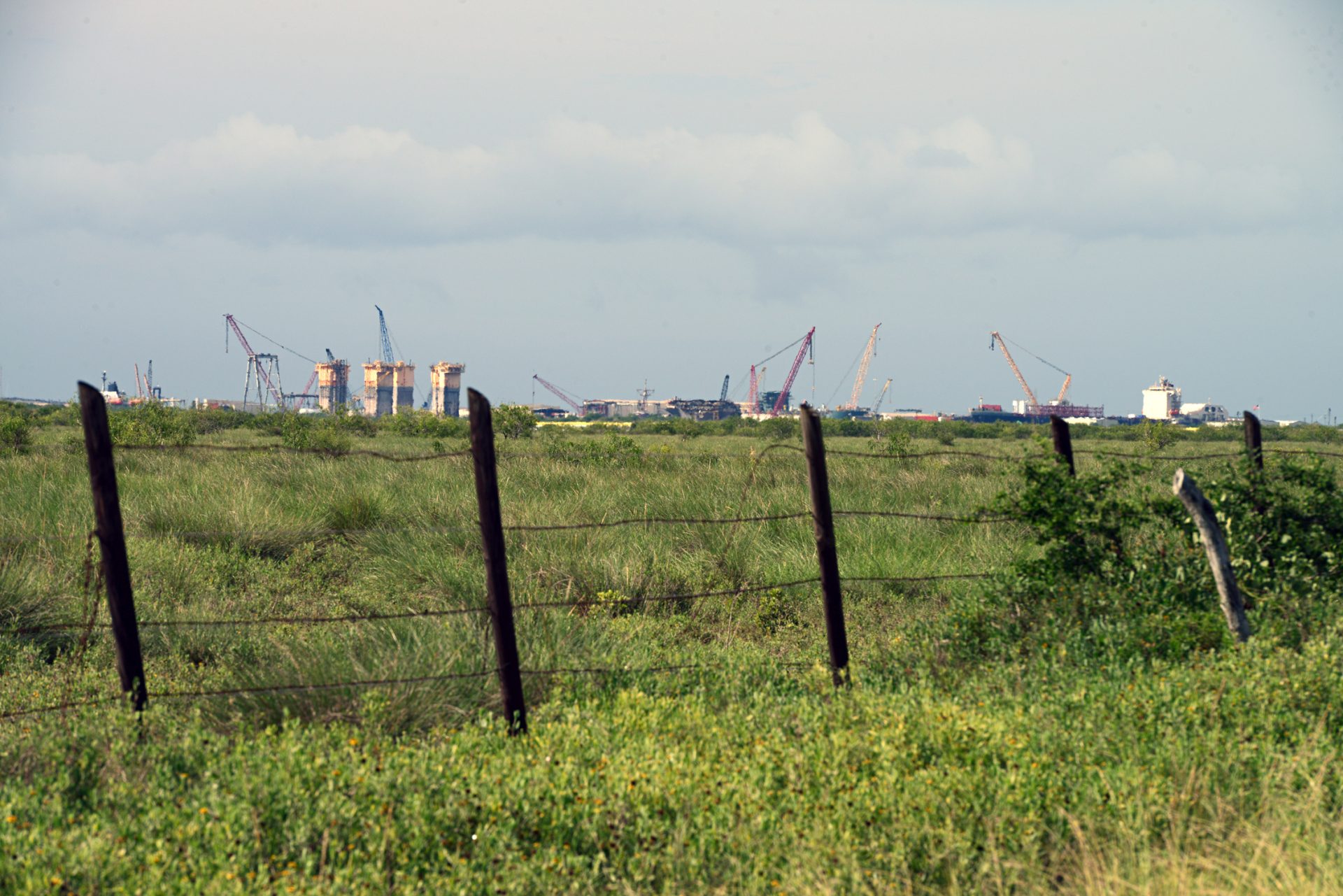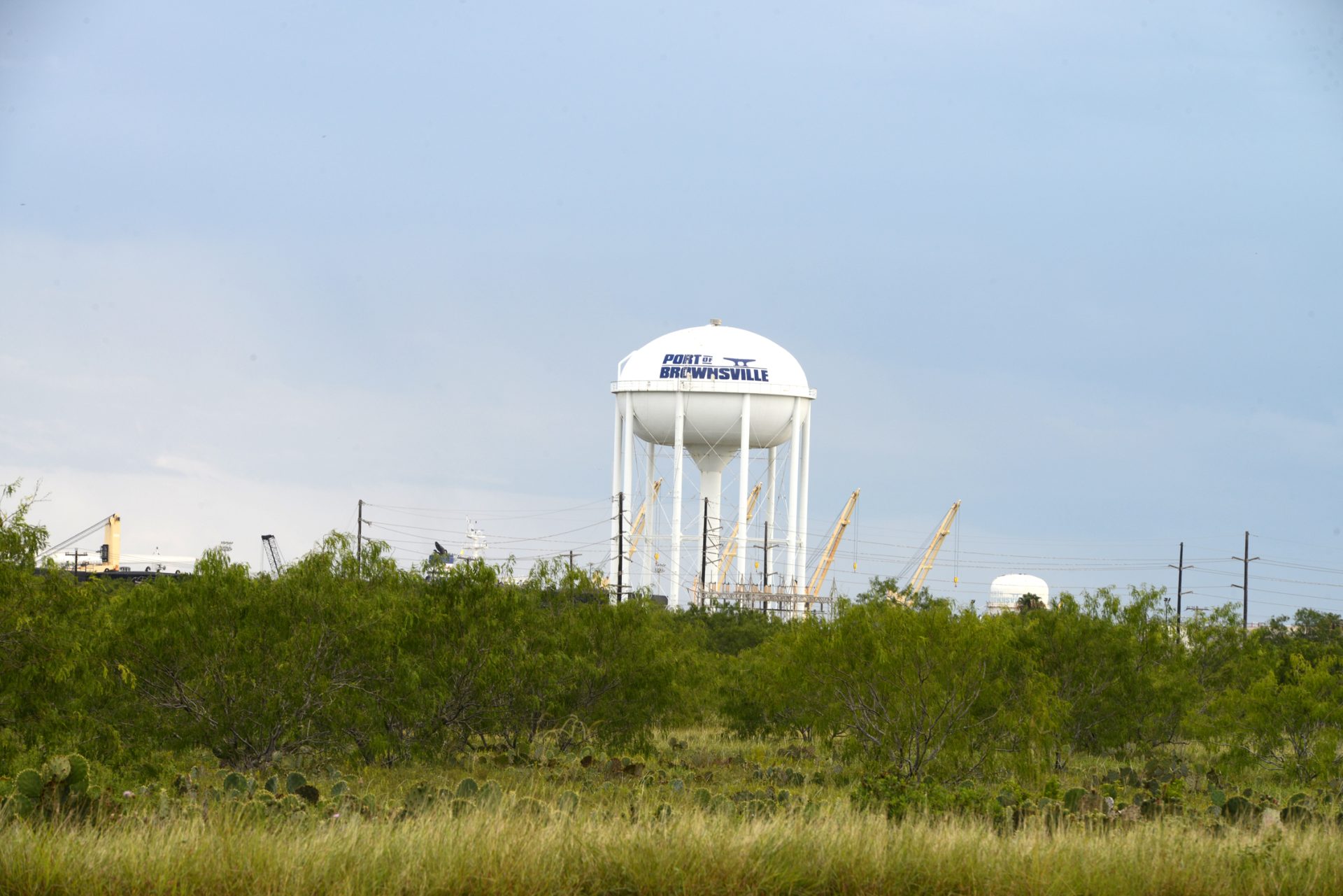|
Only have a minute? Listen instead
Getting your Trinity Audio player ready...
|
Element Fuel Holdings LLC, headquartered in Addison, announced last Thursday that it has completed site preparation and pre-construction work for a large oil refinery the company is planning to build at the Port of Brownsville.
John V. Calce, the company’s founder and co-chief executive officer, said in a statement that Element has the permits in place to “construct and operate a refinery capable of producing in excess of 160,000 barrels, or approximately 6.7 million gallons, per day of finished gasoline, diesel and jet fuel.”
The company’s plans call for a hydrogen-powered refinery and combined-cycle power plant, which combines different types of turbines to produce more electricity than “single circuit” power plants can. The company said the facility’s advanced technology will “generate and deliver significantly cleaner, higher-quality fuels, including much-needed high-octane gasoline and electricity for commercial and consumer consumption.”
“Element Fuels is not only ushering in the next generation of clean fuels, we’re also proving there is a way to produce clean fuels that significantly advances the energy transition,” Calce said. “This changes everything for the industry, consumers and the planet.”
The company claimed it will produce a sufficient volume of low-carbon hydrogen to supply roughly 100% of the refinery’s fuel requirements, essentially eliminating carbon-dioxide emissions. The refinery would process “high-gravity, domestic shale oil” exclusively in order to produce “low-carbon-intensity fuels that will materially reduce carbon emissions,” according to Element.
The power plant would generate more than 100 megawatts of surplus electricity that can go back into the grid to help with the area’s electricity needs, the company said.
“A permit for a greenfield (previously undeveloped land) refinery of this size, scope and functionality has not been granted in the United States since the 1970s,” Calce said. “This speaks to the innovative approaches we are taking to address climate and sustainability concerns in cleaner, greener ways that are new to the refinery space.”
The last significant U.S. oil refinery (Marathon) was built in 1976, in Garyville, Louisiana.
Calce has tried to build a refinery in Brownsville “at least twice before” through his start-up companies ARX Energy and JupiterMLP startups, one such attempt leading to a bankruptcy filing, Reuters reported
Mary Angela Branch with SaveRGV said the grass-roots environmental group is watching the project, though she’s seen no evidence that Calce’s current start-up — currently beating the bushes for investors— will be able to pull it off this time. In 2015, Calce’s company at the time claimed it was fully permitted to move forward with construction of a refinery that would ship product from Brownsville to international markets and be operational by 2020, which didn’t happen, she said.
“I don’t know all the details, but our concern would absolutely be they don’t have any completed projects anywhere that proves to us that they could actually complete a project,” Branch said.

If the port’s 40,000-plus acres are going to be developed industrially, which seems inevitable, SaveRGV wants it done “responsibly, with transparency, which has not been the case in the past with a lot of things, and a lot of these things have failed and we’re left with the scars of it,” she said.
“We’ll be keeping our eye on it as always, making sure that the health and integrity and well-being of the Rio Grande Valley, its citizens and environment, are first and foremost in the minds of our elected officials as well as these big corporations targeting us right now,” Branch said.
Esteban Guerra, chairman of the Brownsville Navigation District, the port’s governing body, said “it’s not just about the bottom line.”
“It’s also about being good environmental stewards and being responsible with the environment,” he said. “It does not go past our radar.”
Big industrial projects are under “intense scrutiny” by regulating agencies, “so it’s not like it’s a free-for-all,” Guerra said.
“We have to put it on a balance,” he said. “We get the billions of dollars invested here and the high-paying jobs. Obviously there are some growing pains that go with it. But it’s certainly something we’re keeping a very close eye on. … Obviously we don’t want to hinder any growth, but we want to make sure that we are following through with everything that they say they’re going to do.”
Guerra said the Element refinery is exciting news for the port, another major project on the heels of Rio Grande LNG, Forza Steel, and others.
“Obviously it’s record project after record project,” he said. “I don’t think it’s a coincidence why the Port of Brownsville is being sought out and chosen for these types of projects. … It’s a testament to our strategic location and our important role in the energy industry and our international trade, especially with Mexico.”
There will be more and more news coming out of the port in terms of growth in major investment and creation of high-paying jobs, which is steadily erasing “that stigma of being one of the poorest communities in the United States,” Guerra said.
“We have a lot of things going on,” he said. “We have multi-billion-dollar projects that are interested in coming. We’re on everybody’s radar right now.”
The Element refinery will be located on 240 acres south of the Brownsville Ship Channel and is expected to be operational in 2027, according to the company.




